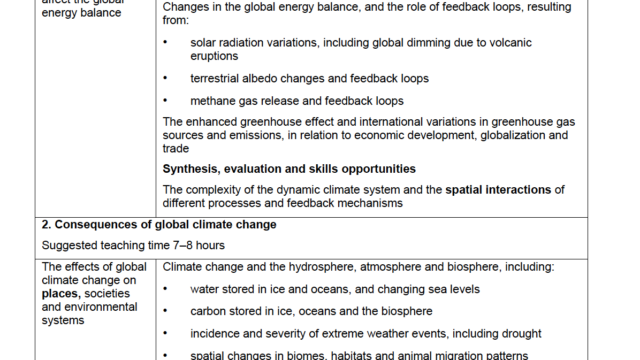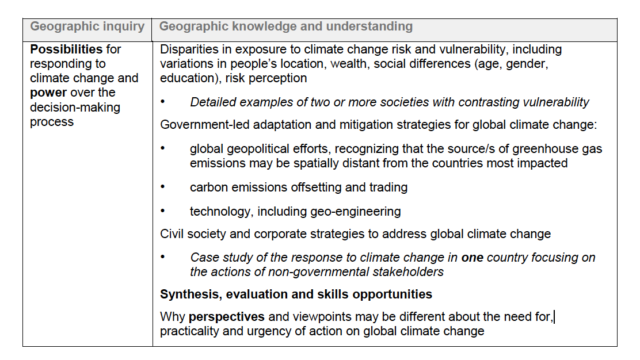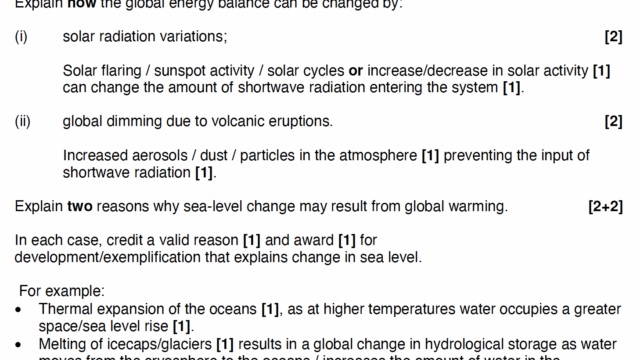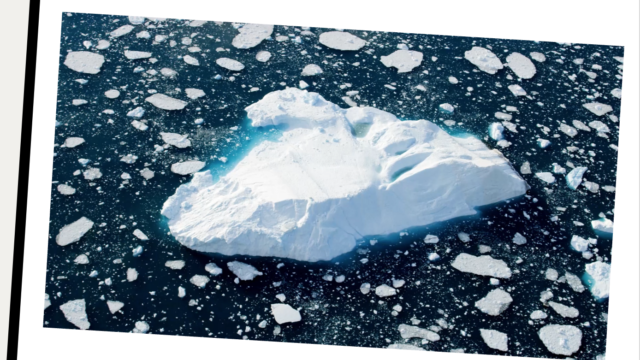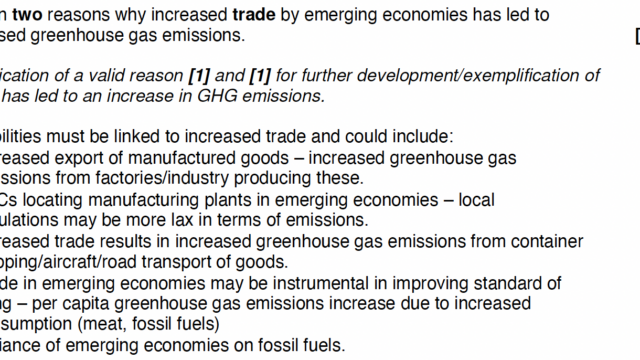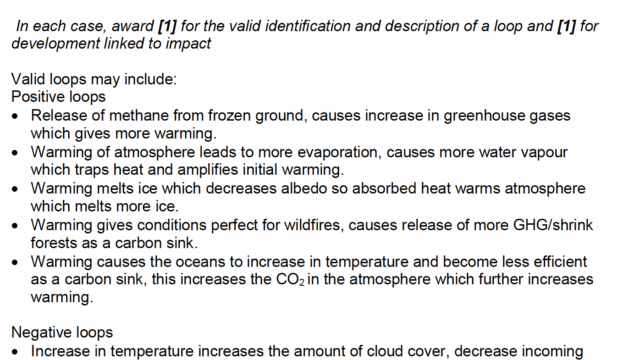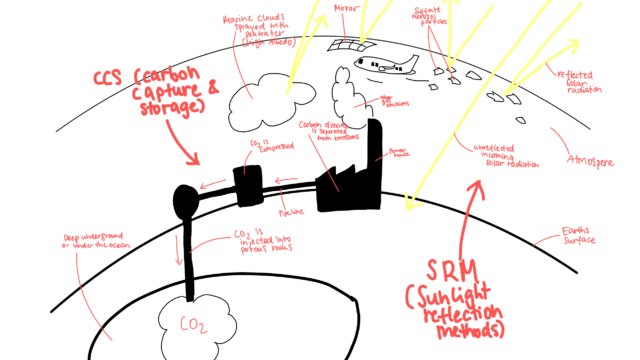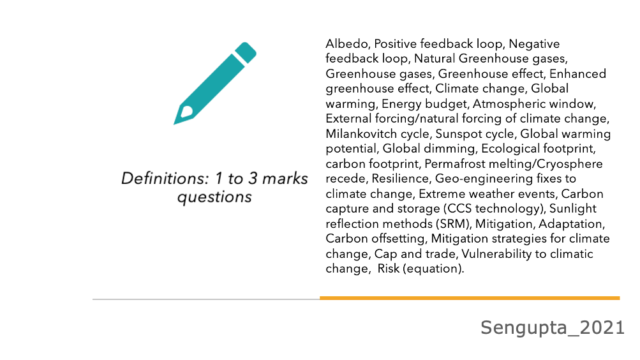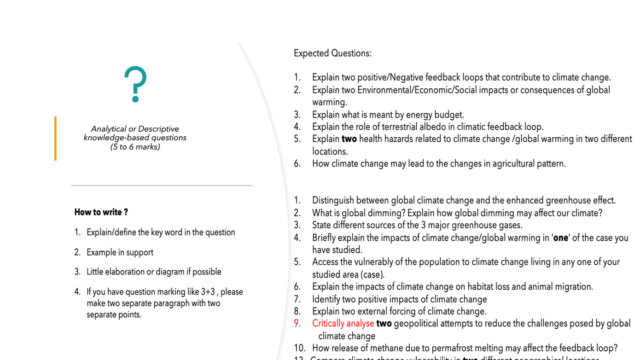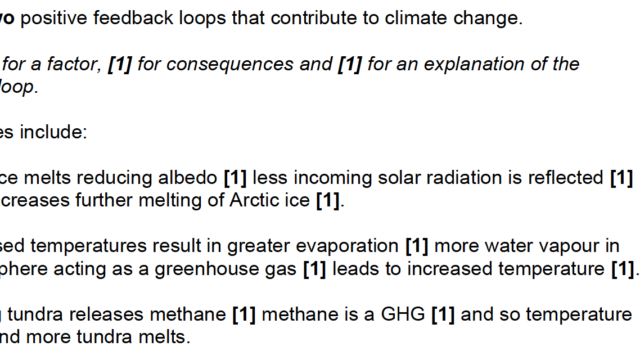Click Here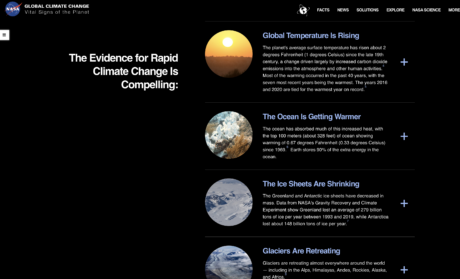
Know Your Earth Quiz: NASA
| Terminology | Definitions | Explanation | Background knowledge |
|---|---|---|---|
| Positive feedback loop | Any act to accelerate and amplify any change that have already started to occur, producing knock-on or triggering effects in the natural system. | Triggering effect of permafrost melting and release of Methane: Methane is an enormously powerful GHG. Huge volume of methane is stored in the permafrost regions of the Earth including tundra, polar and high mountains. The effect of permafrost melting will magnify the positive feedback loop. | Permafrost: Soil and rock including top layer of ice from 1 meter to more than 1.5 km from the ground that remains frozen (below 0 degree Centigrade) for at least 2 consecutive years. |
| Negative feedback loop | Takes place when a system adjust itself in a way that lessen or cancel out the effect of the original change as a result equilibrium or balance could be restored. | Hypothesis of the self correction if Arctic ice begins to melt in large volume: Melting of huge ice mass will expose darker ocean. Albedo will decrease. More absorption of sunlight will create warmer ocean and the level of evaporation will increase. More light coloured cloud in the lower atmosphere will reflect back incoming solar radiation and less insolation will be absorbed by the land and ocean surface, lessening the impact of the initial warming. | Homeostasis: Originated from the Greek words for "same" and "steady". It refers to any process that living things use to actively maintain fairly stable conditions necessary for survival. Negative feedback arises out of balances between forces and factors that mutually influence each other. The atmosphere of the earth differs greatly from that of the other known planets. Earth is in homeostasis, maintaining a steady environment that is currently favourable to life on it. Scientist James Lovelock mentioned that Earth is self-regulating and has a strong negative feedback system to cope up with any change and thereby to maintain its steady state. |
REVIEW: Note down 5 most important Environmental issues to your judgement from the list of global environmental issues we need to resolve by 2030
Your Turn: Design an ‘Infographic’ on the impact and scale of climate change using relevant data and information.
What is global dimming?
The phenomena of global dimming can be defined as the decrease in the amounts of solar radiation reaching the surface of the Earth. In other words, decrease in direct irradiance at the Earth’s surface resulting in a cooling effect over the Earth and it’s atmosphere. Solar irradiance is the power per unit area measured in terms of watt per square metre, W/m2, received from the sun in the form of electromagnetic radiation (EMR).
How does it happen?
This may happen due to the presence of the aerosols, volcanic ashes, and other dust particles and pollutants that absorb solar energy and reflect back sunlight into the space. These particulates also form more reflective ‘brown cloud’that has higher albedo. Aerosols are mainly the tiny particles or pollutants (particulate pollution) released into the atmosphere as the by products of fossil fuels burning by the industries, power sector and emission from the internal combustion engines. Contrails, which is mainly the vapours emitted from the highflying airplanes also cause heat reflection and related global dimming.
Global warming and global dimming both are detrimental, causing severe and quick climate change
Global warming and global dimming both are happening at the same time all over the world with their varying impacts in different places. Despite the cooling effect induced by global dimming, Earth’s temperature has increased by more than 1 degree C in the past 100 years. In fact, it is believed that global dimming is offsetting or negating the severe impact of global warming. However, it is also destabilizing the Earth’s homeostasis (the auto balancing system) and thereby creating serious hazard to the biotic community and to the natural environment. There is no debate on the fact that the pollutants causing global dimming lead to acid rain, smog and other environmental and health hazards. Scientists believe that since 1950, the overall insolation reaching the Earth surface has dropped by 9% in Antarctica, 10% in the USA, 16% in parts of Europe and 30% in Russia causing an overall average drop of more than 20% in solar irradiance. Global dimming and global warming both may induce severe and irreversible changes in wind and ocean circulation patterns resulting into drastic climate change in near future. Severe climate change in a very short span of time imposes high risk to our environment and to our existence. For example, Global dimming may impact the Asian Monsoons, which is responsible for 50% of the global annual rainfall, pushing half of the world’s population to starve. On the other hand, change in the pattern of Gulf Stream due to melting of the polar ice and related changed in thermohaline circulation of the conveyor belt may cause severe winter in the east coast of North America and east coast of europe, making it uninhabitable.
What causes glacial–interglacial cycles?: Evidences of Natural climate change
Earth’s climate has always changed in the past and it will change in the future. It has a natural cycle. Climate change has always happened since the millions of years even before the existence of the human being. WE are currently living in an interglacial period of the Quaternary ice age, known as Holocene. We are actually in the middle of one of Earth’s FIVE major ice ages (Huronian, billion years ago, Cryogenian- million years ago, Andean-Saharan , Karoo and Quaternary) that started 2.5 million year’s age and is marked by alternative glacial and interglacial periods. Interglacial period is the warmer period of time between ice ages. Glacial advancement occurs in the ice age. Large, continental ice sheets in the Northern Hemisphere have grown and retreated many times in the past. The most recent glacial period occurred around 11,500 years ago. Since then, Earth has been in an interglacial period called the Holocene. Glacial periods are colder and generally drier than interglacial periods. No one knows for sure how long the present interglacial period will last. Scientists suggested that the current interglacial might last tens of thousands of years. The people who may have been living in North-central North America, Canada, Russia in 20,000 years ago saw ice and snow the year round as that was the time of the last major ice age. This was the period when most of northwestern Europe was buried beneath hunderds of feet thick sheets of ice. But it was not bitter cold. The average temperature was only 10 to 12 degrees lower than it is today. Snow piled up years after years as there was not enough heat available in the warm months to melt away the ice and snow.
External forcing of climate change
1. Solar output and Sunspot cycle
Refers to the changes in the amount of total solar radiation received at the outer margin of the atmosphere. There have been periodic changes in the levels of solar radiation, ejection of solar material and magnetic activities.
Sun also goes though solar output cycles, the principal one being the 11-years sunspot cycle. The number of sunspots and solar flares keep on changing. Sunspots are temporary phenomena on the photosphere of the Sun, appear visibly as dark spots compared to surrounding regions. They are caused by intense magnetic activity, which inhibits convection and areas of reduced surface temperature that appear as sunspot.Sunspot cycle changes solar irradiance (power per unit area). Solar maximum is related to the appearance of many sunspots while Solar minimum with basically none. UV radiation increases during the solar maximum, which in turn leads to increased generation of the stratospheric ozone that warms up the atmosphere by absorbing both the short and long wave radiation. On the other hand, Solar flare is the sudden brightening observed over the Sun’s surface, caused by the sudden release of a large amount of energy. Recent satellite measurements show an increase of sunspot activity indicating higher solar irradiance (energy per unit area during a given time) means that the Earth is receiving more energy from the Sun at that time.
2.Milankovitch cycle
Milankovitch cycle mathematically theorized that variations in eccentricity, axial tilt, and precession (change in the orientation of rotational axis) of the Earth’s orbit determine climatic patterns on Earth. Earth’s climate in the past has changed several times due to the following factors.
Orbital shape (eccentricity)
The eccentricity is a measure of the departure from circularity. The shape of the Earth’s orbit varies in time between nearly circular (low eccentricity) and mildly elliptical (high eccentricity)
Precession is a change in the orientation of the rotational axis of a rotating body. The Earth’s axis completes one full cycle of precession approximately in every 26,000 years.
Axial tilt
The angle between Earth’s rotational axis and to the plane of its orbit, also moves from 22.1 degrees to 24.5 degrees and back again on a 41,000-year cycle. Currently, this angle is 23.44 degrees and is decreasing.
How to judge the Carbon intensity of an economy?
It depends on the amount of Co2 emitted per unit of GDP. If a country’s carbon emission rise equally in proportion to the rising GDP, it indicates a carbon intensive economy. If the countries carbon emission rise much slower than the GDP, it indicates that some action is being taken to reduce emissions
Are you interested in Geophysics, Earth-sciences, Environmental management and geo-engineering? Then have a look at the Free online courses, Student Internships, Climatic Research and Job opportunities in this field.
Free online Vacation Courses for the students on Climate change Risk and challenges by the renowned professors of Germany, an initiative by the DKK (Deutsche Klima Konsortium): Understand the climate science in 6 chapters. Earn a valuable certificate in your summer vacation. This 30 -50 hours course is self-paced and will lead you to the vital understanding of the Earth’s climatic system.
Max Planck Institute for Meteorology (MPI-M) is developing next generation climate models and is involved in sophisticated computation research. Click here to explore more.
Click here to know about the Antarctic Research Programms and types of job vacancies in Australian Antarctic division.
Click here to know about the students internship and summer positions at NASA
Learn how to design intelligent systems. This free online course from Harvard University will enable you to take the first step toward solving important real-world problems and future-proofing your career by introducing the basic of artificial intelligence with python

